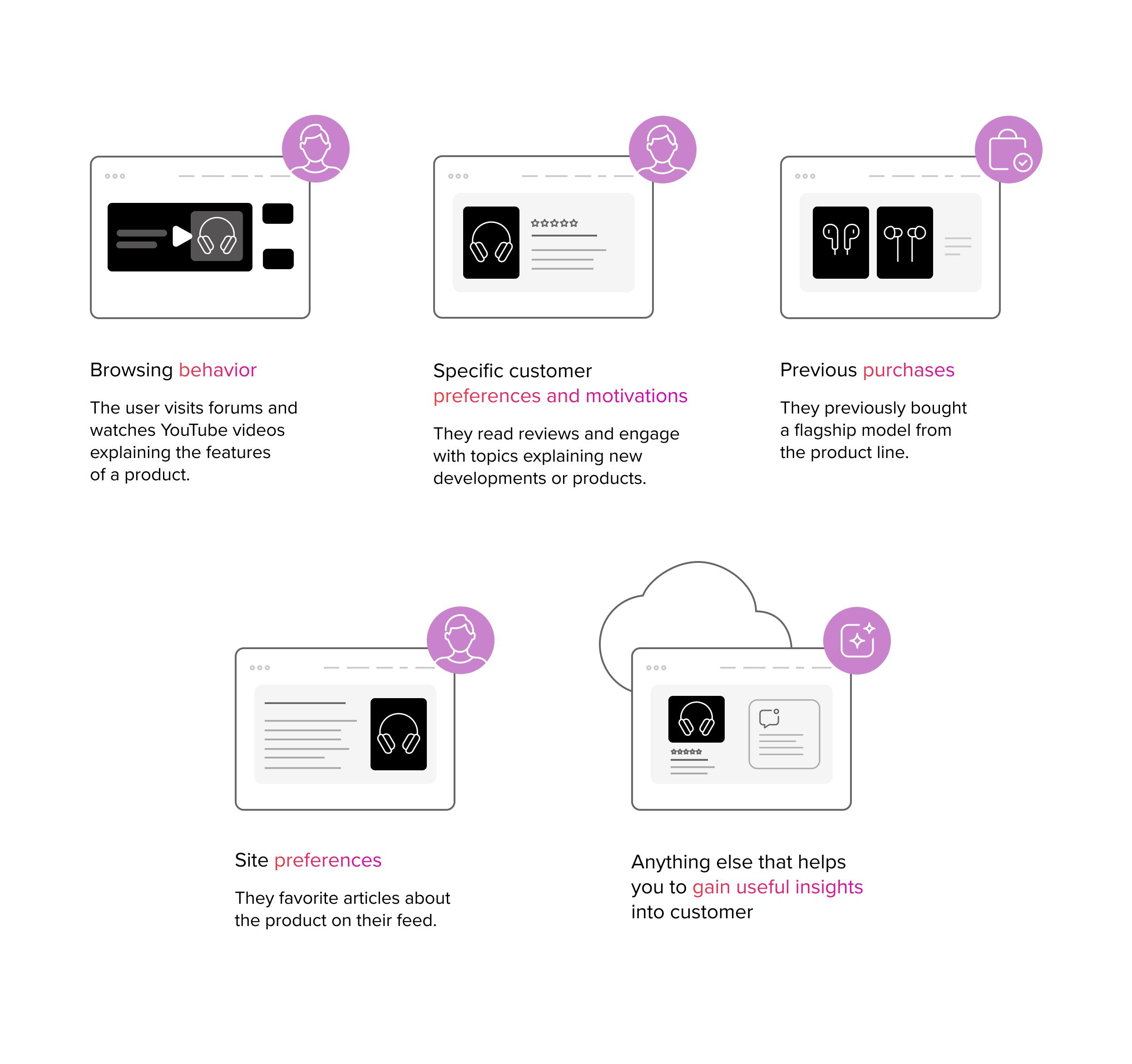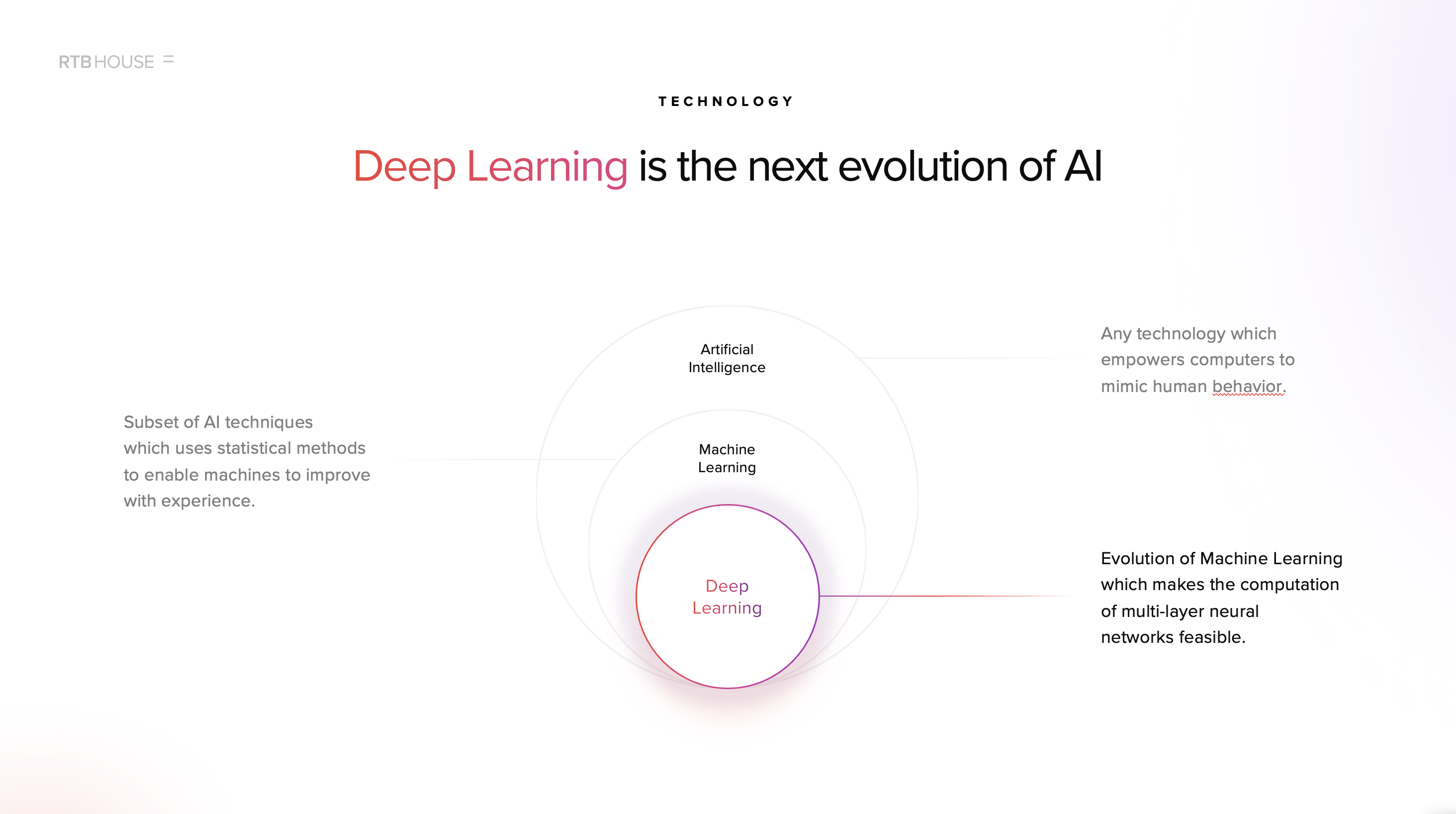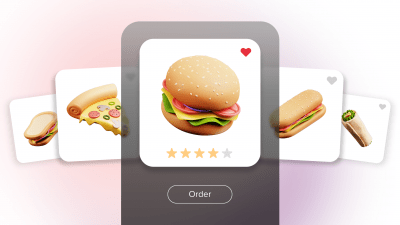Last Updated on: 10th October 2024, 08:20 am
Everyone loves a good challenge, but some are tougher to tackle than others. For marketers, the big one is the personalization paradox. 71% of consumers prefer personalized ad content, but 74% are also concerned about how advertisers are actually using their personal data. This creates a problem for marketers. They want to reach out to their customers with personalized content but often rely on tracking technologies that are considered invasive. Fortunately, there is an answer to this particular paradox. Brands can use data-driven strategy to leverage large anonymized datasets that provide rich personalization at scale without compromising on privacy.
In this article, you will learn:
- Why the personalization paradox is such a headache for brands.
- How the way we use data is changing as third-party cookies are retired.
- How brands can use data-driven personalization to thrive in the cookieless future.
- Why Deep Learning will be a key tool for the privacy-first advertising world.
Table of Contents:
- What is data-driven personalization?
- Why do users need personalized ads?
- Why are users concerned about their privacy?
- The balanced solution—data-driven personalization
- Privacy-friendly personalization leverages data to use a holistic advertising approach
- Deep Learning makes it easier to understand complicated datasets
What is data-driven personalization?
Data-driven personalization is the practice of tailoring your adverts to individual users, or groups of users, based on the analysis of data you have collected. This data can include: This kind of analysis requires too much data to be reasonably undertaken by humans. Instead, marketing companies rely on quantitative methods and algorithms to process the data and provide insights that can then be used to customize a campaign.
This kind of analysis requires too much data to be reasonably undertaken by humans. Instead, marketing companies rely on quantitative methods and algorithms to process the data and provide insights that can then be used to customize a campaign.
The exact type of solution used varies from company to company, and each has its own specific advantages. For example, here at RTB House, we use advanced Deep Learning-powered solutions to process our datasets. These types of algorithms are useful because they are able to learn independently and understand complicated unstructured datasets.
How does this look in practice? By using Deep Learning to target ads to high-quality users, Mosaic Brands Ltd. was able to boost ROAS by 24.3%. This boost was primarily driven by reduced ad waste and improved conversion rates due to the use of data to improve user selection during the ad bidding process.
Another powerful way to leverage data is with personalized coupons. By focusing on providing repeat customers with their discount codes within ads, RTB House was able to increase ROAS for Tikla Gelsin by 86%.
Why do users need personalized ads?
The benefits for companies placing personalized ads are clear, but what about the end user? The main benefit of personalization is that it ensures adverts they see are actually relevant to their interests. People see hundreds of adverts a day, and the more relevant and personalized they are, the more likely they are to bring value to that particular person.
However, there are drawbacks to a personalized approach, and the biggest one is privacy.
Why are users concerned about their privacy?
While data-driven personalization is broadly popular, the sheer scale of data collection has caused some users to question whether they are worth the cost. The primary culprit is the tracking cookie. These third-party cookies collect vast amounts of data about the sites a user visits, and they can even track a user across multiple websites. This was useful for personalization, but ultimately, it damaged user trust in advertisers, creating a significant pushback against this kind of technology.
The balanced solution—data-driven personalization
In response, Google announced that it would be retiring third-party tracking cookies from the Chrome browser—originally planned in 2022 but then postponed to 2023, 2024, before being converted into a plan to let users choose whether they want to accept cookies or not. As an alternative, Google Chrome is trialing several solutions from the Google Chrome Privacy Sandbox. These will allow advertisers to connect with groups of users with shared interests without needing to know the identity of any specific individual.
Specifically, Google Chrome has been trialing FLEDGE. This approach allows buyers to group users into specific cohorts which share the same interests. The advertiser can buy impressions targeted to this group without ever knowing who a specific individual is.
There are still significant limitations to FLEDGE, specifically in terms of industry participation. The industry isn’t just relying on the Privacy Sandbox; alternative methods are also in the works. For example, IAB Labs has been working on Seller Defined Audiences (SDAs) to give publishers a way to provide meaningful information about their inventory and audiences to downstream buyers through a standardized system. While promising, our own tests with SDAs have identified two fundamental flaws. The first is that there are still no long-term signs that quality assurance will be sufficient to make these signals meaningful, and the second is that it does not adequately prevent fingerprinting techniques.
This is a common theme for new cookieless tracking technologies: there is a promise but no guarantee for advertisers that they will be as effective as the old methods. Thus, advertisers face a stark choice: do they double down on fingerprinting and other “tested” technologies, ignoring user privacy concerns? Or do they work to adapt their methodologies to a privacy-friendly personalization approach, using a combination of classic concepts like contextual marketing and modern Deep Learning algorithms to deliver deep data-driven personalization?
In our view, the answer is clear. If advertisers continue to ignore user privacy, the pushback against ads is only going to worsen. We run the risk of losing control of the environment as users retreat behind ad-blockers or states legislate against these technologies without broader industry participation.
That’s why we propose adopting data-driven personalization.
Privacy-friendly personalization leverages data to use a holistic advertising approach
Cookies were useful precisely because they provided advertisers with a rich dataset. This made it easy for ad buyers to find users to connect with. However, there are other ways to do this. They simply require interpreting different kinds of data and combining multiple approaches.
For example, you might be able to use publisher data to successfully conduct a contextual marketing campaign on publications where you know users interested in your product will frequent. RTB House has had significant success using ContextAI to conduct these sorts of campaigns.
You could then continue the conversation through a variety of methods. For example, you might use first-party cookies to remind users who return to your site about products they interacted with last time. This same technology can also be used to construct interest groups in Protected Audience API, which can then be used to connect with users without needing cross-site identifiers.
This approach enables deep data-driven personalization without violating a user’s privacy. Most importantly, it can help avoid the uncanny feeling that certain products are chasing you online. Over the long term, brands that proactively address user privacy concerns will have a significant advantage over those that rely on invasive tracking methodologies.
This will eventually change the advertising environment, and companies that are best able to process complicated, even unstructured, datasets will begin to have an advantage.
Deep Learning makes it easier to understand complicated datasets
One of the ways to do this, and the way we do it here at RTB House, is to take advantage of Deep Learning algorithms. This tool passes data through layers and uses a neural net inspired by the structure of the human brain to draw increasingly complicated conclusions. This allows the algorithm to learn as more data is fed into it and to handle complicated, diverse datasets.

We use Deep Learning in every single one of our advertising solutions. This has positioned RTB House to thrive in the cookieless future, and we can help your company do the same.
To talk more about the privacy paradox and how you can adopt a data-driven marketing approach, reach out to our team today.





